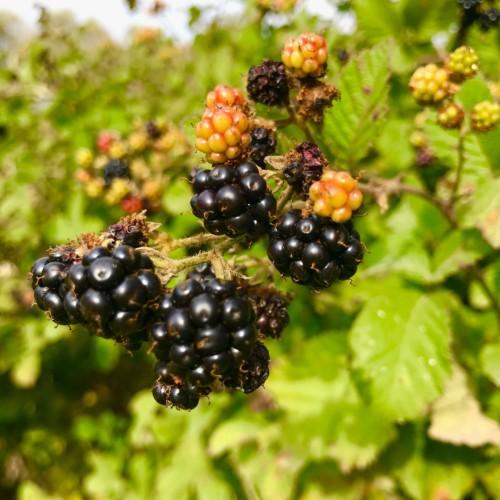
thornless blackberry
Rubus fruticosus 'Black Satin'
Cycle:
Perennial
Watering:
Minimum
Hardiness Zone:
4
Flowers:
Flowers In Summer
Sun:
Full sun, Part sun/part shade
Soil:
Humus rich, Rocky , gravelly , dry
Fruits:
Fruits In Summer Ready In Fall
Edible:
Yes
Leaf:
Yes
Growth Rate:
High
Maintenance:
Low
Drought Tolerant:
Yes
Salt Tolerant:
Yes
Thorny:
Yes
Invasive:
Yes
Care Level:
Medium
watering
Nootka rose requires regular watering throughout its active growing season. It should be watered deeply once a week during the spring and summer months. During the hottest months of summer, you may have to increase to watering twice a week, especially if the plant appears to be wilting. Ensure that the soil stays moist, not waterlogged, to prevent root rot. During the milder months of autumn and winter, water should be reduced to once every 2 weeks.
sunlight
Nootka rose (Rosa nutkana) prefers full sunlight. It should receive at least 6 to 8 hours of direct sunlight each day, with the sun at its highest point in the sky (between 10am and 4pm) providing the best light intensity. The plant may also benefit from some shade in the late afternoon, as too much direct sun at this time may cause sun damage to its foliage. Nootka rose is a hardy plant but may struggle to survive in partial shade or in an area with heavy shade.
pruning
The Nootka rose (Rosa nutkana) should be pruned in late winter, around March or April. It is best to wait until after any risk of frost has passed as pruning too early can cause new growth to be damaged. Pruning is also necessary to keep the Nootka rose in an attractive, open shape. To prune the Nootka rose, start by looking for any dead or damaged branches and cutting them off as close to the ground as possible. Then look for any branches that are growing in the wrong direction and prune them back. Finally, look for any overly long or crossing branches and prune them as needed. The goal is to keep the Nootka rose in an open shape with some air circulation around it. Try to leave at least a few small foliage buds on each branch after pruning. This will encourage new growth. The Nootka rose does not require a lot of pruning, just enough to maintain its shape and reduce new growth.
